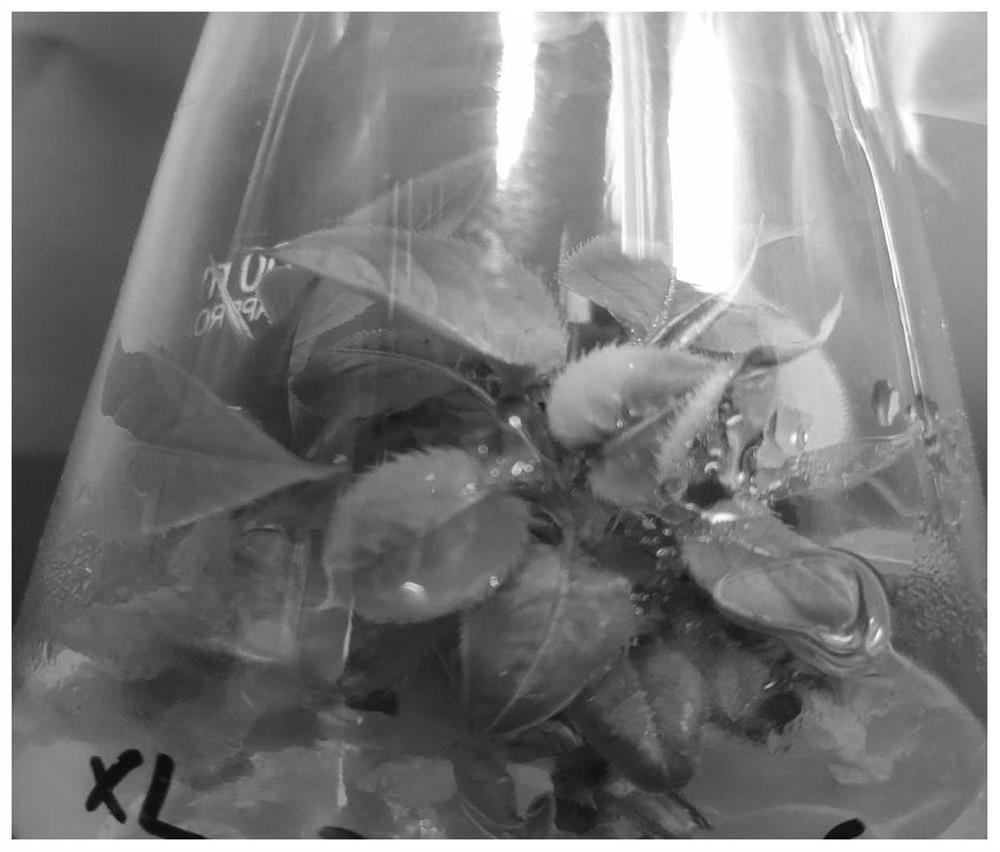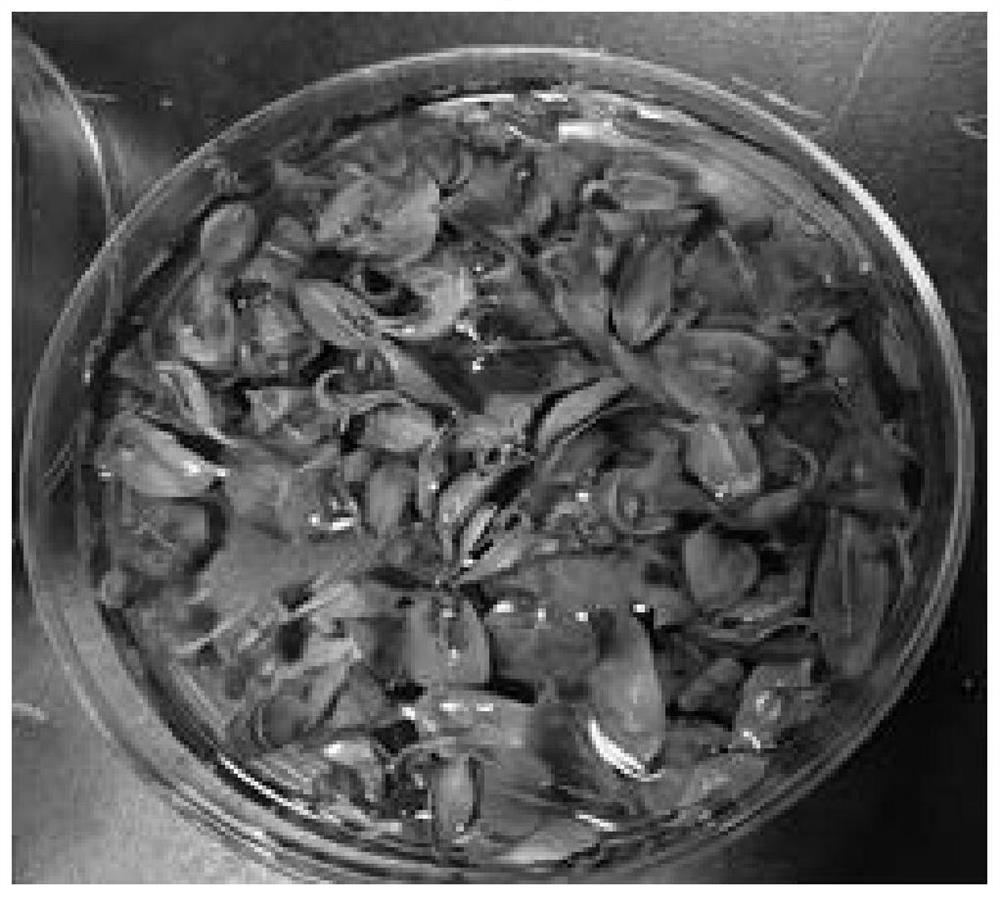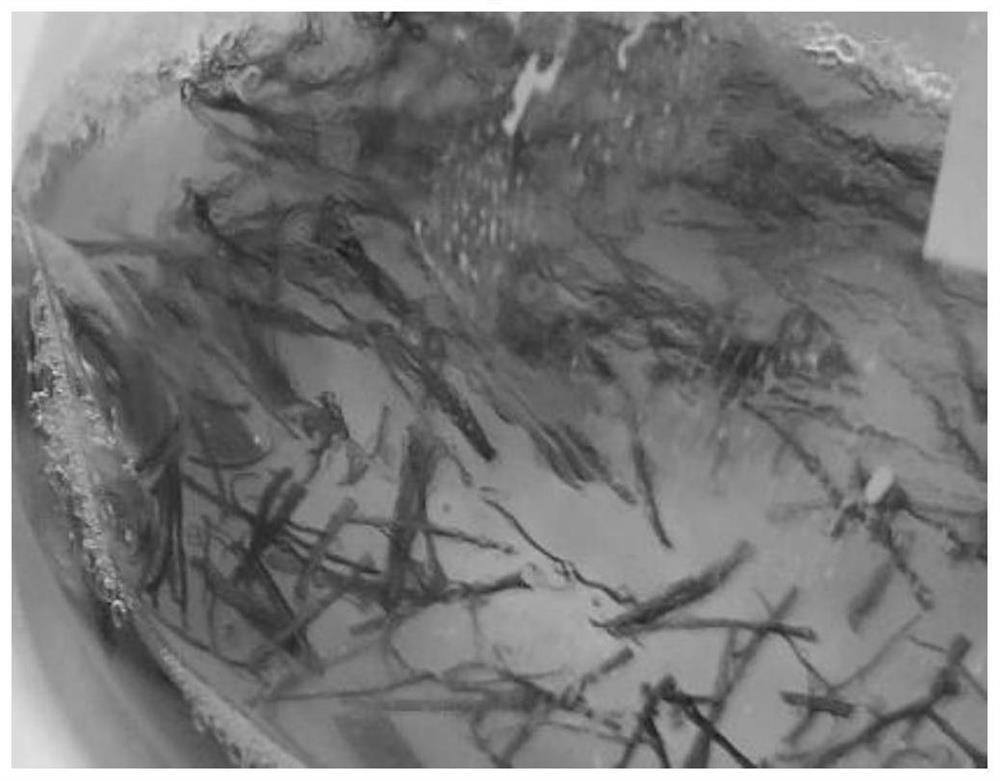Extraction method of pear leaf protoplast
A protoplast and extraction method technology, applied in the field of pear leaf protoplast extraction, can solve the problems that it is difficult to suppress browning, protoplasts are not easy to succeed, and browning is easy to occur
- Summary
- Abstract
- Description
- Claims
- Application Information
AI Technical Summary
Problems solved by technology
Method used
Image
Examples
Embodiment 1
[0038] (1) Take Xinli No. 7 tissue culture seedlings grown for 35 days, fully expanded and healthy leaves 2 to 3 nodes from the shoot tip (such as figure 1 shown). To prevent deactivation from loss of moisture, soak it in water (such as figure 2 shown).
[0039] (2) Enzyme solution configuration:
[0040] Cellulase 1.0% (wt / vol), isolated enzyme 0.4% (wt / vol), pectinase 0.1% w / v, mannitol 0.5mol / L, 2-(N-morpholino)ethanesulfonic acid (MES) 20mMpH5.8, potassium chloride 20mM mixed, put in a 55 ℃ water bath for 10min, after cooling to room temperature, add 10mM calcium chloride and 0.1% bovine serum albumin, filter into the Erlenmeyer flask with a 0.45μm filter head, and obtain the enzymatic hydrolysis liquid for use.
[0041] (3) Take the leaves of the tissue cultured seedlings and cut them into 0.5-1mm wide filaments with a scalpel blade. The mass volume ratio to the enzymolysis solution is 1:10.
[0042] (4) Enzymatic hydrolysis at 25°C for 12 hours in the dark. Obser...
PUM
 Login to View More
Login to View More Abstract
Description
Claims
Application Information
 Login to View More
Login to View More - R&D
- Intellectual Property
- Life Sciences
- Materials
- Tech Scout
- Unparalleled Data Quality
- Higher Quality Content
- 60% Fewer Hallucinations
Browse by: Latest US Patents, China's latest patents, Technical Efficacy Thesaurus, Application Domain, Technology Topic, Popular Technical Reports.
© 2025 PatSnap. All rights reserved.Legal|Privacy policy|Modern Slavery Act Transparency Statement|Sitemap|About US| Contact US: help@patsnap.com



